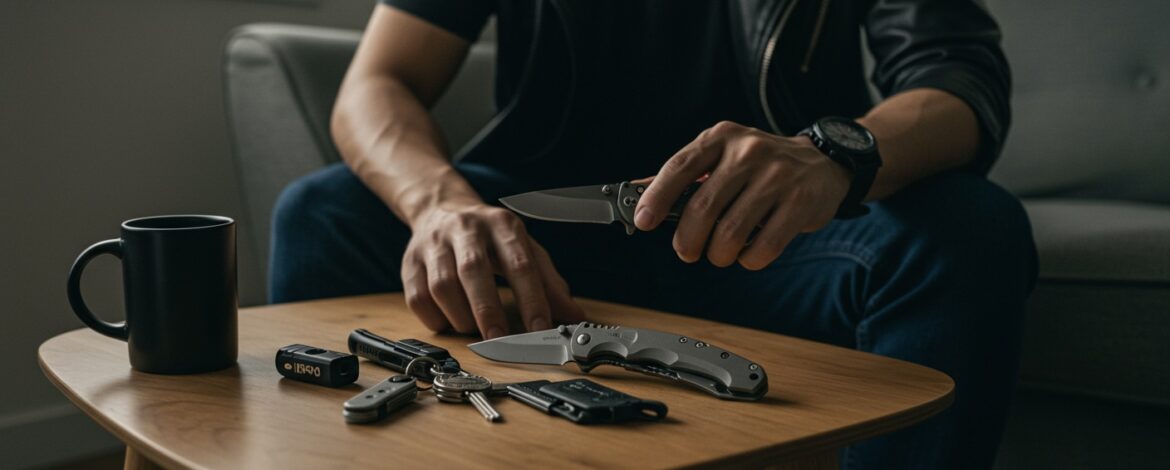Choosing your first everyday carry (EDC) knife can feel overwhelming. Walk into any knife store or browse online, and you’ll face hundreds of options with confusing specs and wildly different price points. The good news? You don’t need to become a metallurgy expert to find a great first knife. Let’s break down what actually matters.
Folders vs. Fixed Blades vs. Multi-Tools
Your first decision is knife style. Folding knives are the most popular EDC choice because they’re compact, pocket-friendly, and generally more acceptable for urban carry in South Africa. They fold into their handle, making them safe to carry and discreet enough for office environments.
Fixed blade knives don’t fold – the blade and handle are one solid piece. They’re incredibly strong and reliable since there’s no folding mechanism to fail, but they require a sheath and are bulkier to carry. Unless you work on a farm or need maximum durability for outdoor work, save fixed blades for later.
Multi-tools combine a knife blade with pliers, screwdrivers, and other implements. Brands like Leatherman and Victorinox make excellent options. They’re incredibly practical but compromise on knife performance – the blade won’t be as good as a dedicated knife. Consider a multi-tool if you frequently need various tools throughout your day.
For most people starting out, a quality folding knife is the sweet spot.
Understanding Blade Types
Blade shape affects how your knife cuts. Drop point blades have a gently curved spine that drops to meet the edge, creating a strong, versatile point. They’re excellent all-around performers and the most popular EDC choice.
Tanto blades have an angular point that’s extremely strong for piercing but less effective for slicing. Clip point blades have a thin, sharp point great for detail work but more fragile. For your first knife, stick with a drop point – it handles everything from opening packages to preparing a braai.
Locking Mechanisms That Matter
Since folding knives have moving parts, they need locks to prevent closing on your fingers. Liner locks are simple and reliable – a metal liner inside the handle locks against the blade. They’re easy to operate one-handed and found on many quality knives.
Frame locks work similarly but use the knife’s frame itself, creating a stronger lock. Lock-back mechanisms are extremely secure but require two hands to close. Any of these will serve you well, though liner and frame locks offer better one-handed operation.
Avoid knives without locks entirely – they’re unsafe for any task requiring pressure.
Decoding Steel Grades
Knife steel determines edge retention, corrosion resistance, and how easy the blade is to sharpen. You’ll see designations like 440C, AUS-8, or S30V. Here’s the simplified version: 440C and AUS-8 are budget-friendly steels that sharpen easily but need more frequent maintenance. 154CM and VG-10 offer better edge retention at mid-range prices. S30V and S35VN are premium steels that hold an edge longer but cost more and are harder to sharpen.
For a first knife, something in the 440C to VG-10 range offers the best balance. You’ll develop sharpening skills without investing heavily upfront. In South Africa’s varied climate, consider corrosion resistance if you live in coastal areas – humidity and salt air can damage cheaper steels.
Legal Considerations in South Africa
Understanding knife laws is crucial. The Dangerous Weapons Act and associated regulations govern knife carry. You may carry a knife for lawful purposes – work, sport, recreation, or legitimate collection – but carrying any knife with intent to harm is illegal.
Most folding knives under 100mm blade length are generally acceptable for everyday carry when you have a legitimate reason. Automatic knives (switchblades) and certain gravity knives face stricter regulations. Carrying any knife concealed on your person without lawful reason can lead to prosecution.
The key is demonstrable lawful purpose. If you’re carrying a knife for work, outdoor activities, or practical daily tasks, you’re typically fine. However, carrying one into a bar, sports event, or school is problematic regardless of intent.
Provincial and municipal bylaws may impose additional restrictions, so check local regulations in your area. When in doubt, consult your local SAPS station.
Features for Daily Carry
Look for a knife between 75mm and 90mm – long enough to be useful but generally acceptable for everyday carry. A pocket clip is essential for secure, accessible carry. Avoid tactical-looking designs with unnecessary serrations or aggressive styling, especially if you work in professional environments or frequently visit shopping centres where security might take issue.
Your first EDC knife doesn’t need to break the bank. While imported premium brands can be expensive in South Africa, quality local options exist. Brands available locally like Cold Steel, Gerber, and Buck offer solid entry-level knives. As you develop preferences, you can invest in premium brands like Benchmade or Spyderco if your budget allows.
The best first knife is one you’ll actually carry. Choose something practical, legal, and comfortable in your hand – you can always expand your collection later.

